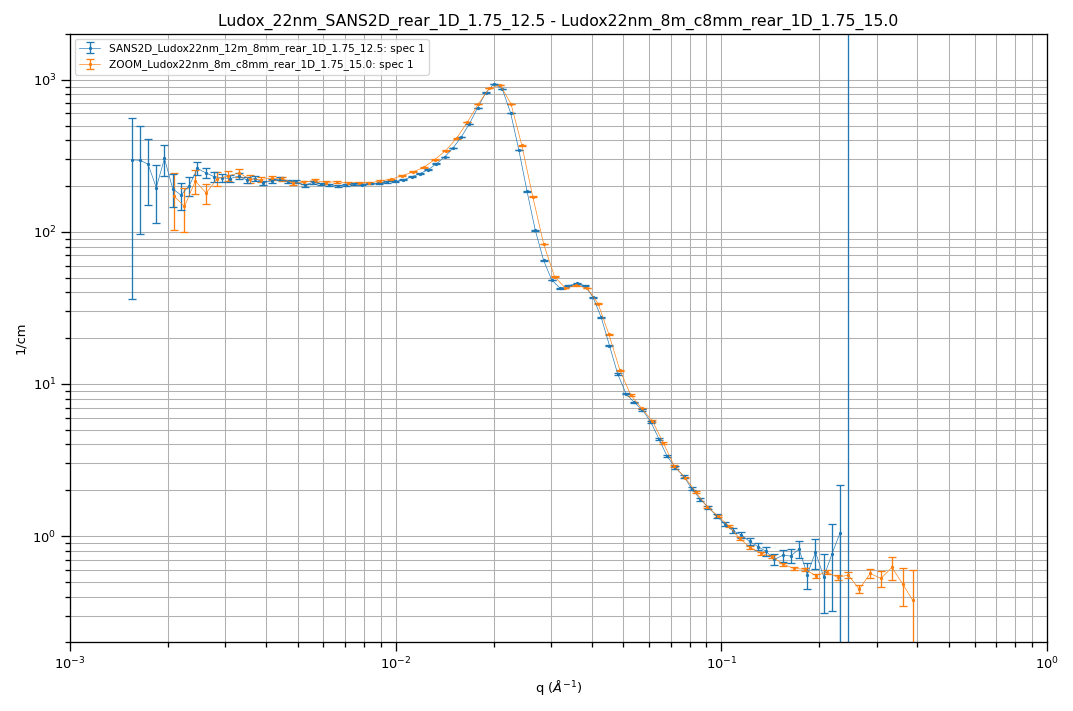SANS Group | SANS Instruments | SANS Team | Science | PRACTICAL INFORMATION FOR USERS | ISIS | ISIS Research Groups
How to choose the Q-range
Scroll down to see examples!
|
When choosing your Q range, think also about flux and statistics. Since the neutron flux decays with the inverse of the square of the distance, it will be 9 times higher using 4m sample-detector-distance setup, comparing with 12m setup. Additionally, at 12m setup, we have to use a narrower wavelength range in time of flight mode, which will decrease statistics at low Q. This will be more important for weakly scattering samples. See more about statistics scrolling down.

** Merging low and high angle bank; ^extended Qmax up to 1 Å-1, using offset det (other scales can be probed by using SESANS).
Q-range vs Statistics
The graph below is a comparison of the scattering from the same sample (our polymer blend standard GDW20) using 12m and 4m sample-to-detector distances at SANS2D beamline. The Q-range improves at 12m setup, and the statistics improve at 4m setup.

Combining FRONT and REAR detectors
The graphs below are showing the superimposition of the scattering intensity recorded by FRONT and REAR detectors at SANS2D beamline. The front detector is used for expanding the Q-range when there is a smooth overlap region between both detectors. MANTID data reduction will merge both intensities generating one only final curve.


Comparing SANS2D_12m x ZOOM_8m
This comparison is only to give you a rough idea about the Q range coming out from these two instruments, SANS2D and ZOOM. Please note that this is only an example, the samples are the same, but prepared in different days, measurements were not from the same cycle, and collimation is slightly different on both setups. Here we are using only rear detector on SANS2D (front detector would extend the Q range for wide values).

